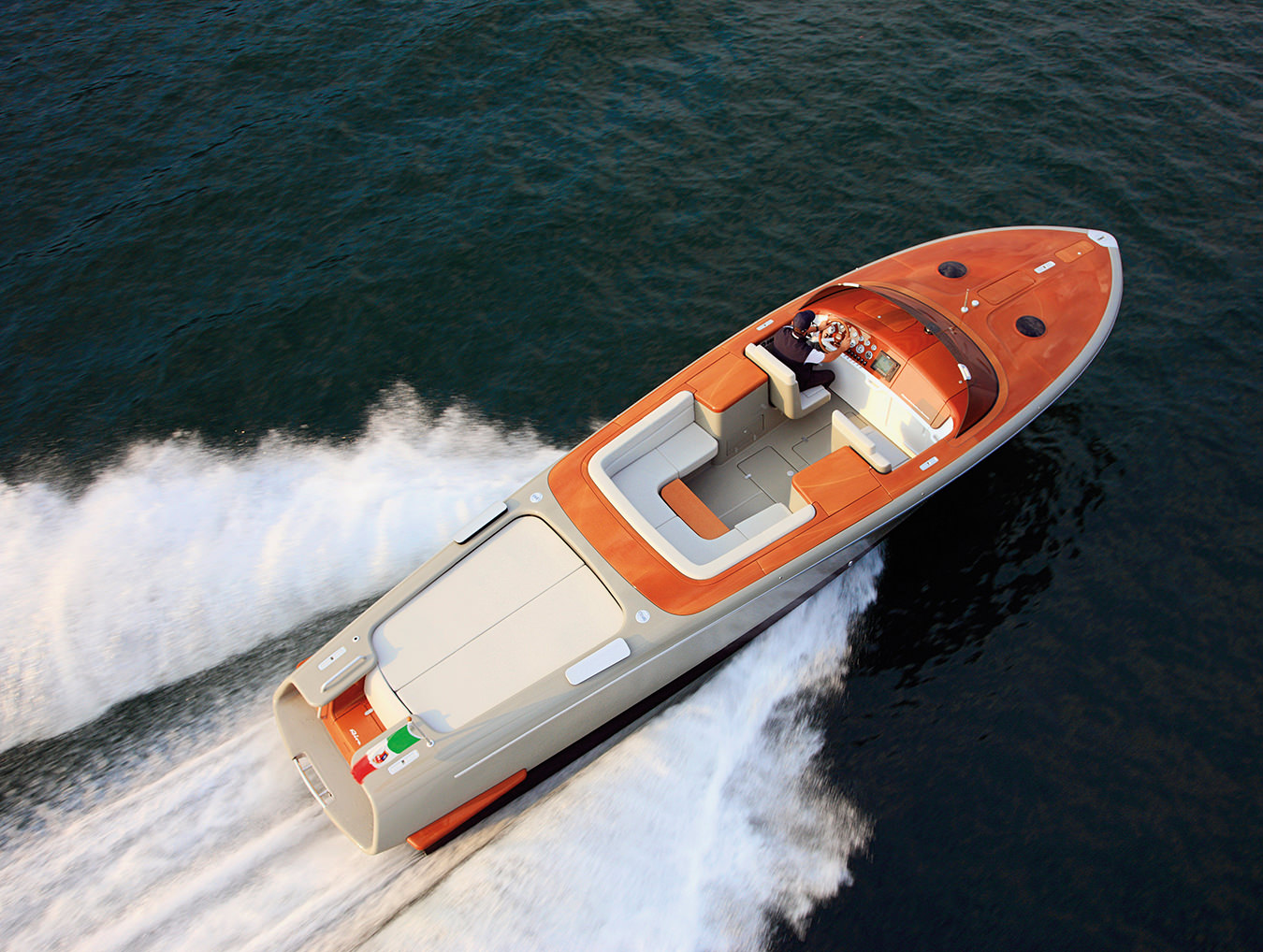-
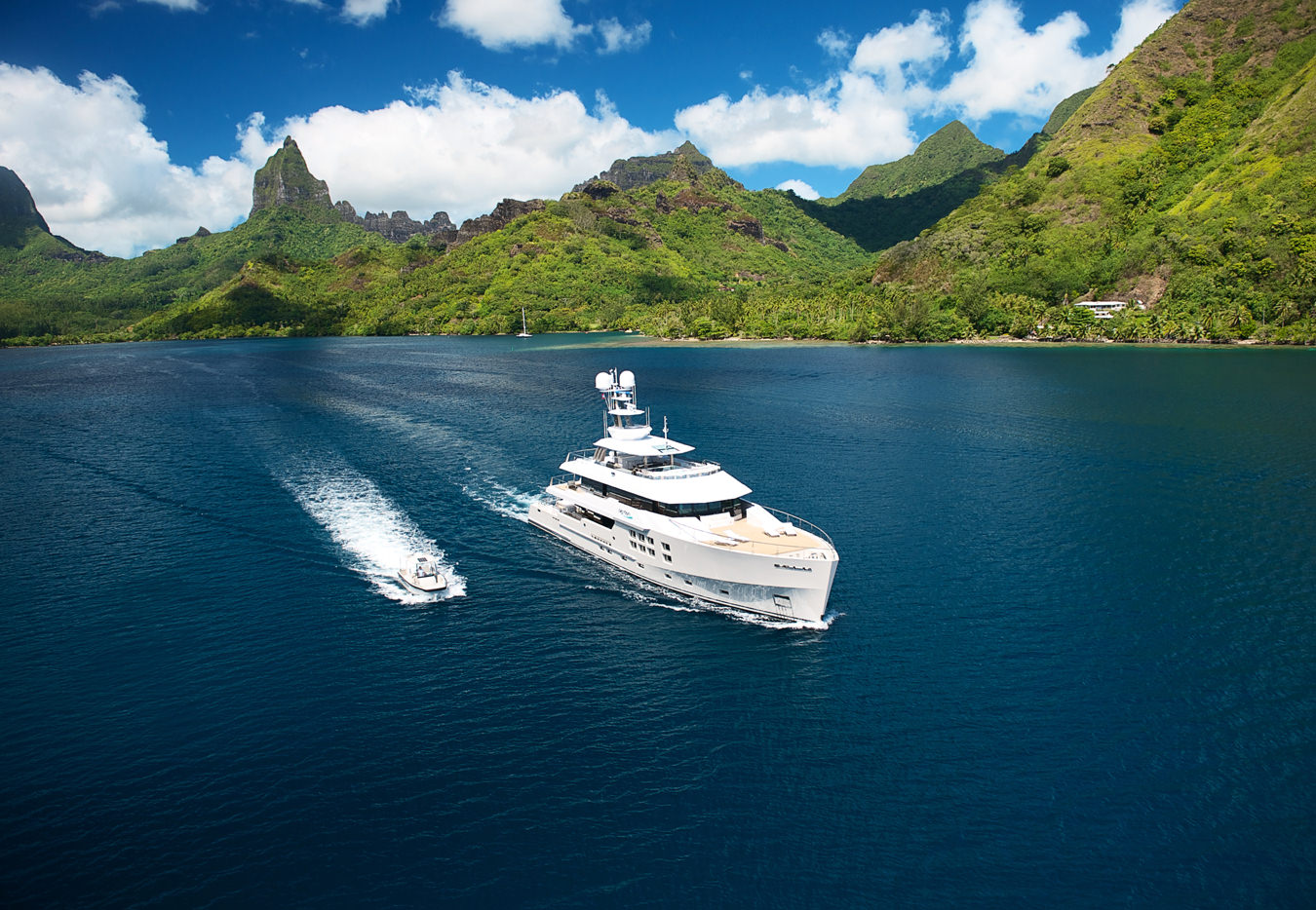
Y.Co’s Big Fish, a 45-metre motoryacht, running with tender. Photo by Tim McKenna, courtesy of Y.Co.
-
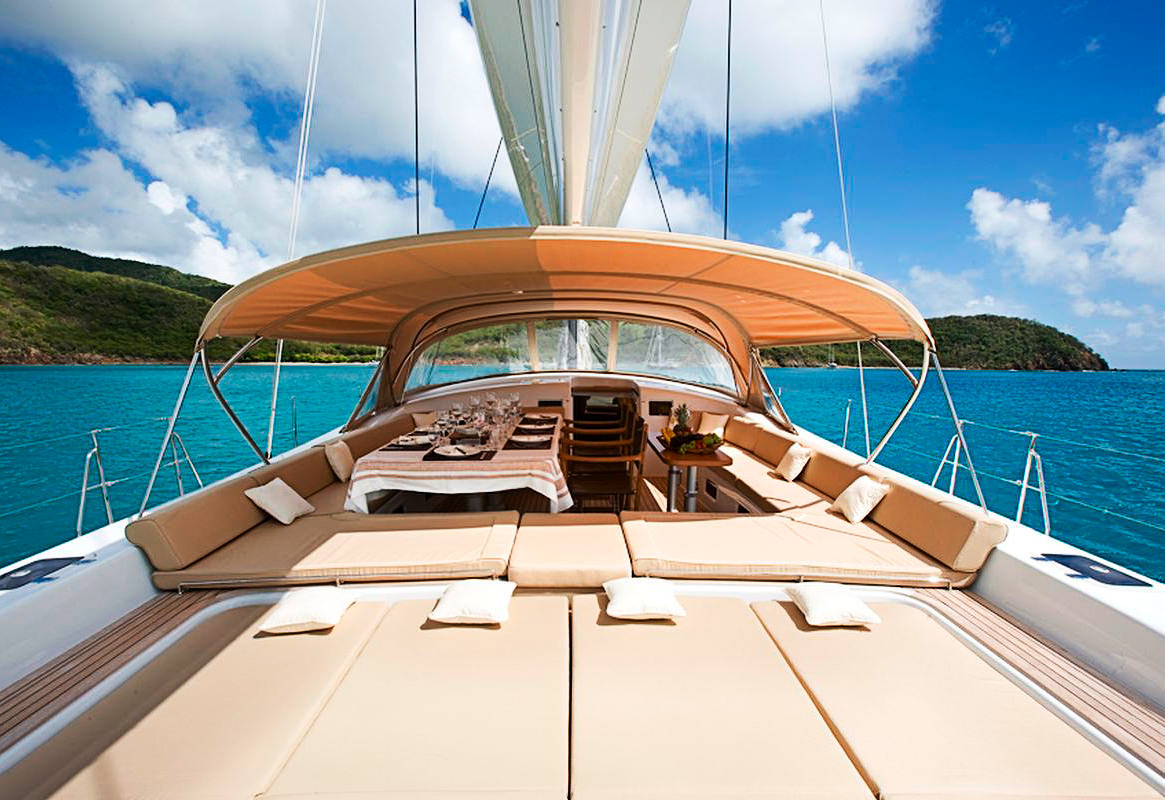
Camper & Nicholsons’ Rapture, a 30.48-metre sailing yacht. Photo courtesy of Camper and Nicholson.
-
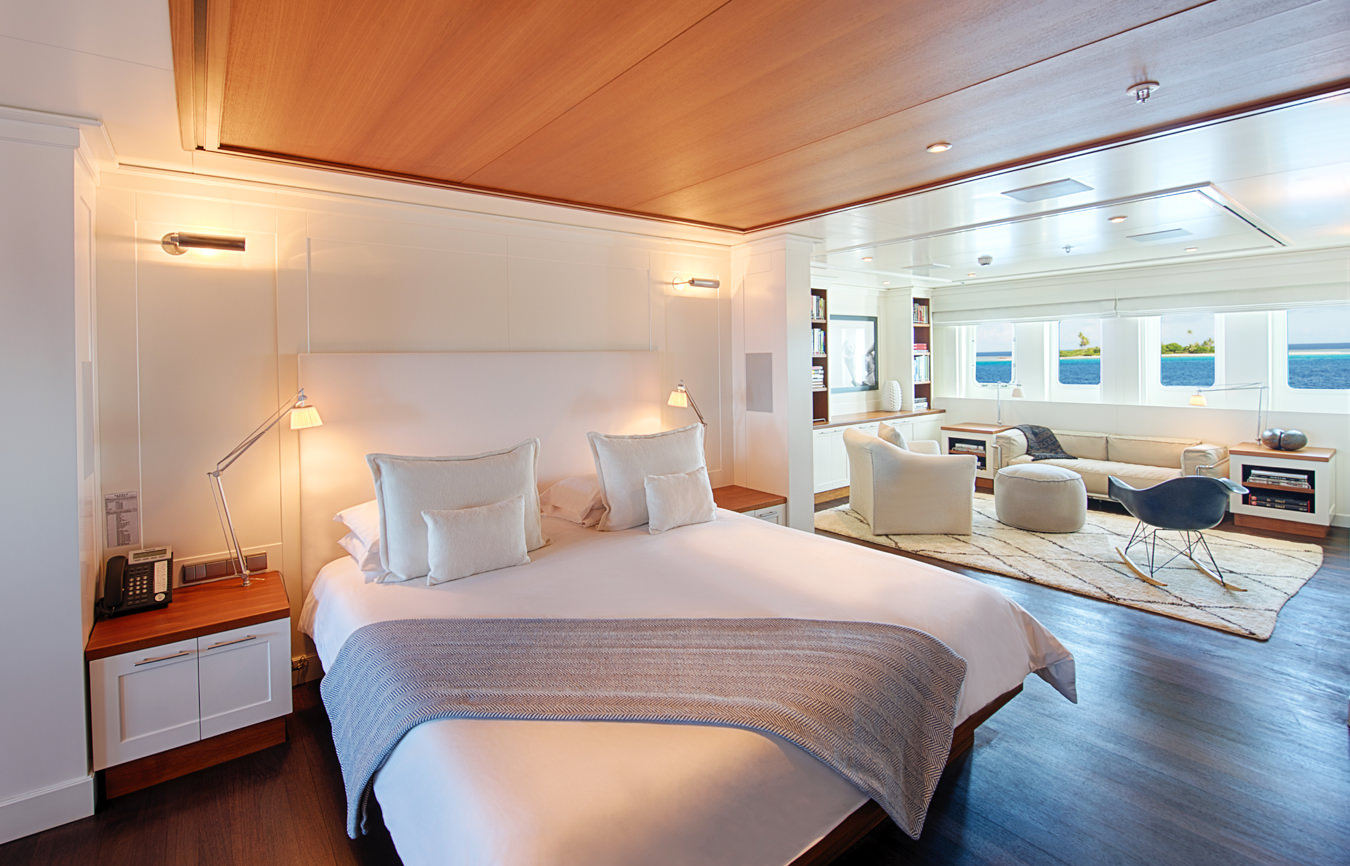
Y.Co’s 59.2-metre Senses superyacht, with interiors by Philippe Starck. Photo courtesy of Y. Co.
-
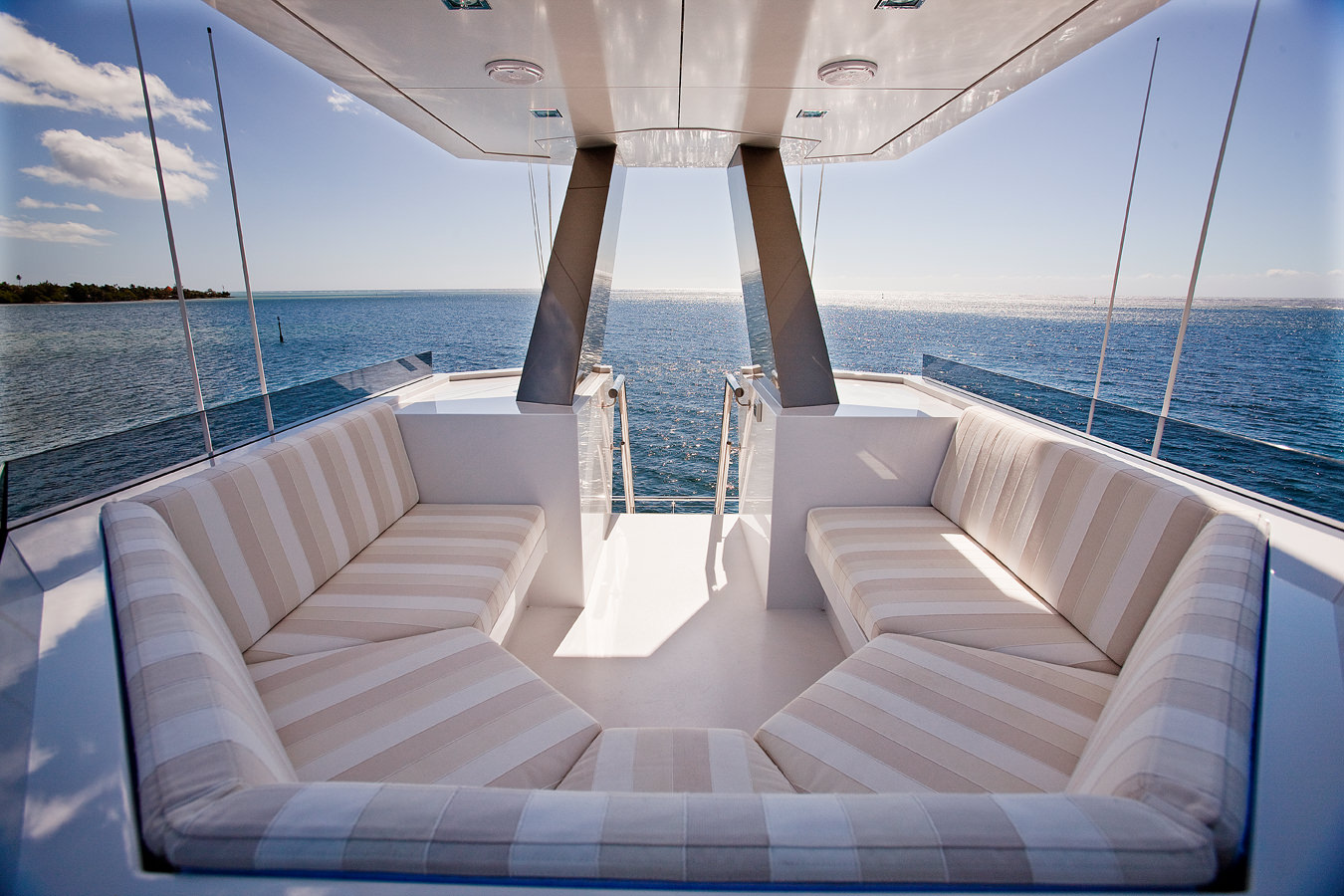
The top lounge of Y.Co’s Big Fish. Photo by Tim McKenna, courtesy of Y.Co.
-
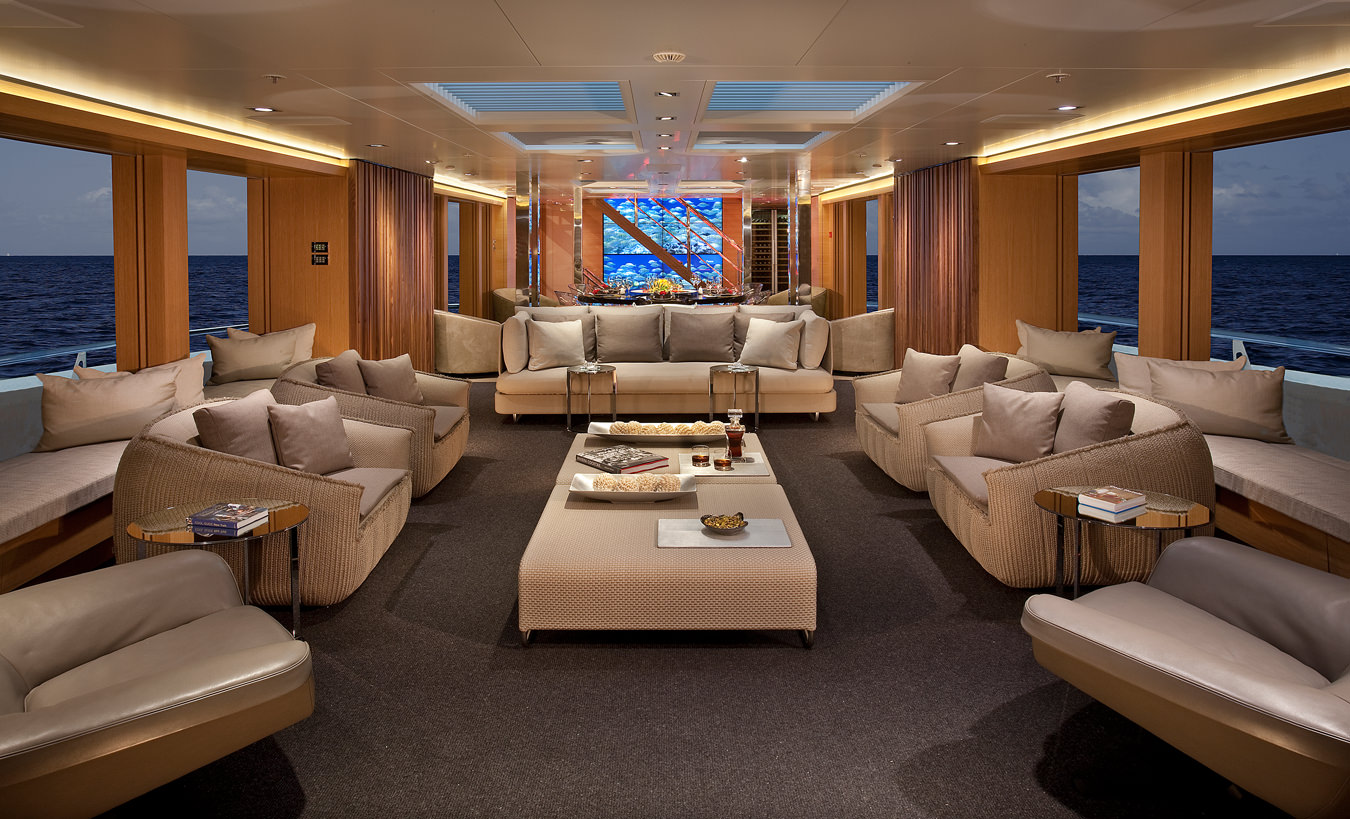
Inside the lounge of Y.Co’s Big Fish. Photo by Tim McKenna, courtesy of Y.Co.
-
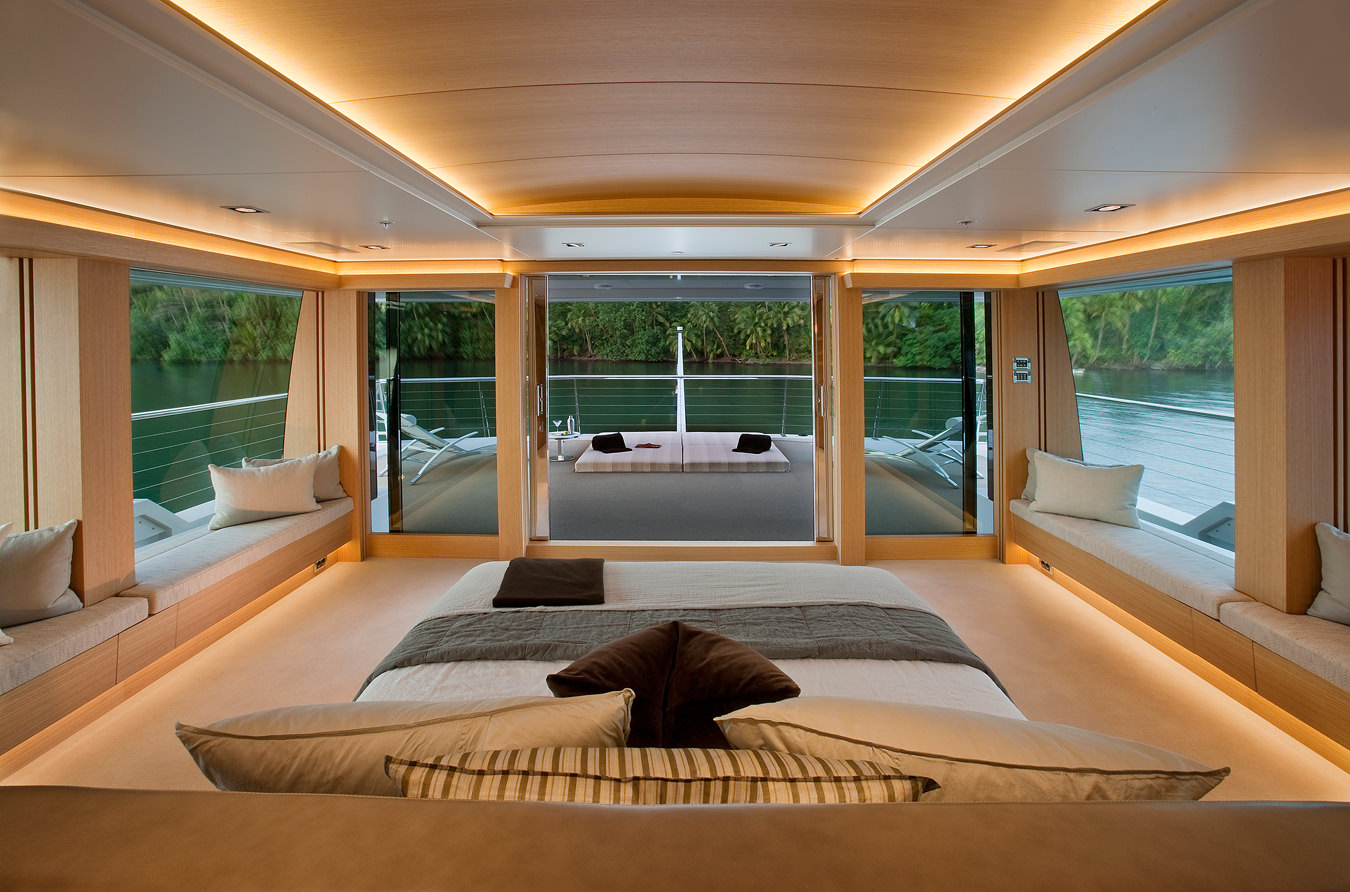
A view of the Big Fish‘s master stateroom. Photo by Tim McKenna, courtesy of Y.Co.
-
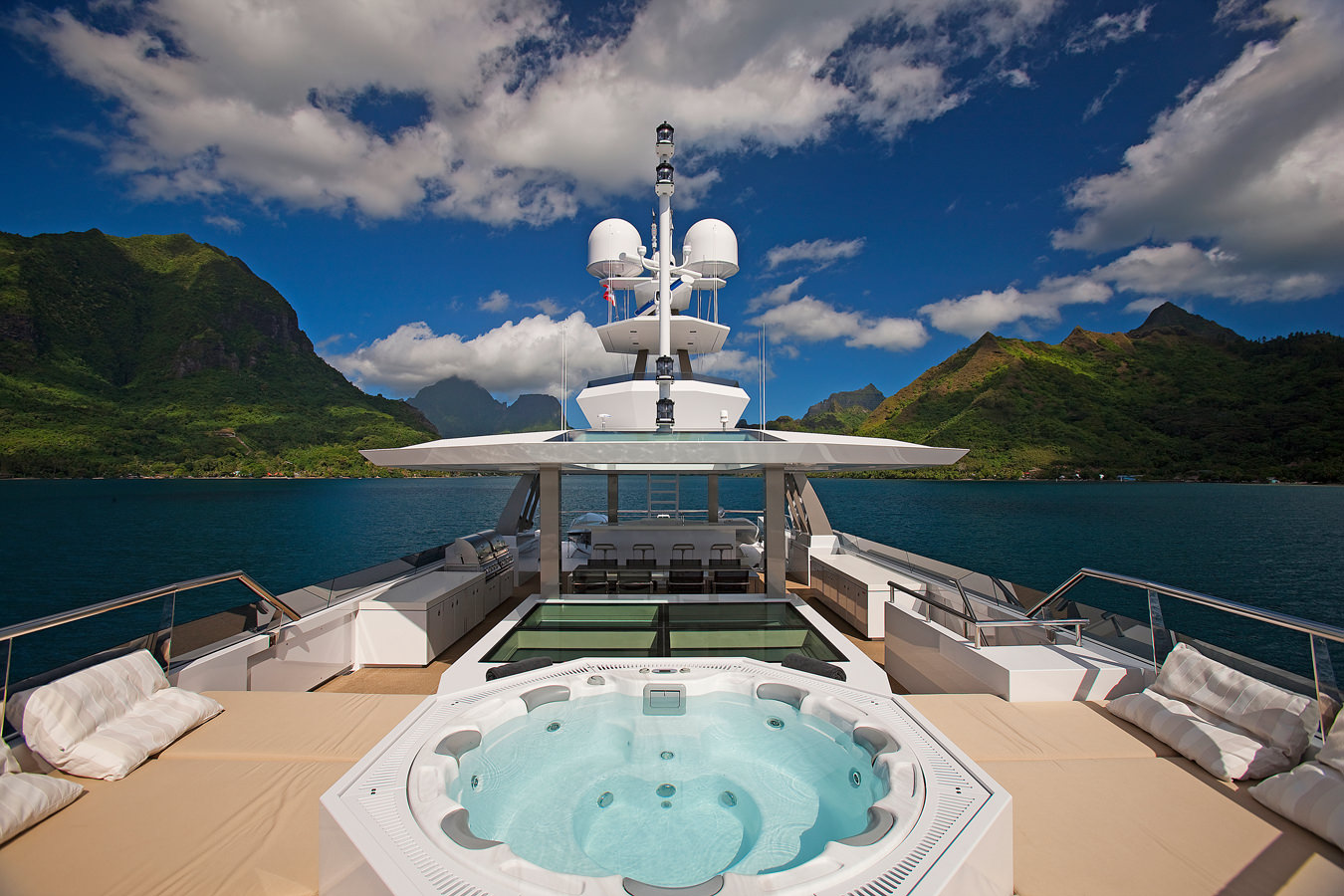
The jacuzzi sundeck of the Big Fish. Photo by Tim McKenna, courtesy of Y.Co.
Charter Yacht Expeditions
Sea and solitude.

Nearly 15 years ago, I discovered what it was to be a speck on the ocean. I was on a chartered yacht on a tiny coral islet on the edge of Rangiroa’s lagoon in French Polynesia’s Tuamotu Archipelago; an hour away by motorboat from the nearest village and 350 kilometres from Tahiti, almost 10,000 kilometres of open ocean lay between me and South America. It was soul stirring—more profound than anything I have felt on land, no matter how isolated the location.

Camper & Nicholsons’ Rapture, a 30.48-metre sailing yacht. Photo courtesy of Camper and Nicholson.
Despite the peace and beauty of the Tuamotus, until a decade ago it was extremely rare to see a superyacht there; today, though, more blue-chip private yachts are making the journey, and those with the means to charter a big boat can explore these pristine and scarcely populated waters in phenomenal comfort. With hundreds of islands scattered over thousands of square kilometres, such remoteness brings rare privileges as well as certain logistical challenges.
Yacht charter agency Y.Co’s tongue-in-cheek advice to divers is, “A private supply of both oxygen and Dom Pérignon are needed.” On a motoryacht such as the 45-metre Big Fish [from USD $245,000 ($328,000 Canadian) per week], purpose built for long-range exploration, on-board diving and game-fishing experts help guests make the most of the location—and the Greg Marshall–designed interiors supply creature comforts.
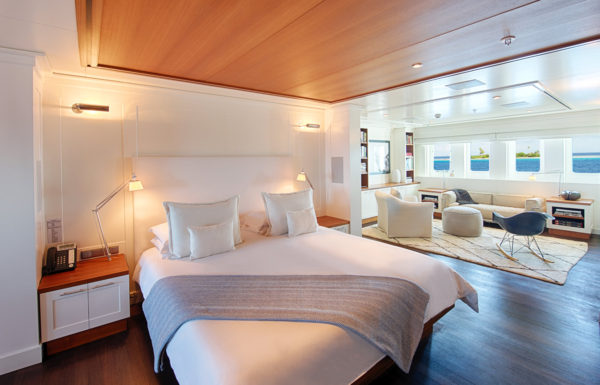
Y.Co’s 59.2-metre Senses superyacht, with interiors by Philippe Starck. Photo courtesy of Y. Co.
While French Polynesia is geographically remote, it seems almost pedestrian compared with Papua New Guinea. Or, further west, Borneo, East Timor, Western Australia’s Kimberley region, Myanmar’s Mergui Archipelago, the Andaman Islands. That top-drawer yachts—both power and sail—can now be chartered in such far-flung places is evidence of a desire to spurn the predictable destinations of the Mediterranean and the Caribbean in favour of places that will provide more than just an escape from the crowds. Going remote imparts a more profound experience of nature, culture, and yachting itself.
With hundreds of islands scattered over thousands of square kilometres, such remoteness brings rare privileges as well as certain logistical challenges.
“Owners and charterers are willing to forgo the traditional expectations [of luxury yachting] in order to have an extraordinary experience,” says Ben Lyons, CEO of yachting expedition company EYOS. “For us, it’s a matter of getting them out of their comfort bubbles—in a good way.”
On land, hideaways that combine luxury and remoteness are a well-established option, but the management of Aman resorts was among the first to see that by extending beyond the boundaries of its already remote Amanwana property in Indonesia, it could offer another layer of value to its guests. In 2009 it launched Amanikan, a 32-metre craft that combined the external form of the traditional Indonesian phinisi with archetypically Aman interiors; in 2015 Amandira followed—a 52-metre big sister with five double cabins and 14 crew. Based at Amanwana, the boats take guests to the Komodo National Park (famous for its primeval dragons), the Gili Islands (which have superb diving), or Raja Ampat—a string of 1,500 islands and cays scattered over 40,000 square kilometres of sea.

The top lounge of Y.Co’s Big Fish. Photo by Tim McKenna, courtesy of Y.Co.
“In addition, such areas don’t lend themselves to staying in one place; you need to move around in order to get a good sense of them,” says Gayle Patterson, a charter manager at Camper & Nicholsons’ Monaco office. “On the plus side, every day you can have a pristine beach to yourself or be the only divers on a particular section of reef. And you can move away when other boats arrive.”
The more crowdphobic may prefer Vanuatu, a string of 82 islands east of Papua New Guinea where stirring landscapes, magnificent reefs, and rich tribal culture remain intact. In such places, charter yachts are increasingly available thanks to owners who want to discover somewhere remote or do something unique. “While the yacht is there, it’s only sensible to offer it for charter when the owner is not aboard,” says Tom DeBuse, director of charter management at Y.Co.

A view of the Big Fish’s master stateroom. Photo by Tim McKenna, courtesy of Y.Co.
While some expedition-style charterers have graduated from conventional destinations, brokers estimate that about half are completely new to yachting—including a breed of youngish clients who have no interest in just sitting on a tropical beach. Nick Heming, also of Y.Co, cites clients who have “just sold a business and have the time and money to reward themselves,” and notes that the great majority are families. “Parents see this as a way to offer an education to their children. They go to extraordinary places in a way that is far beyond any school curriculum.”
Today, more governments allow foreign yachts to be chartered from their ports and infrastructure has improved. Most important, though, is the greater number of yachts with the capacity to make longer voyages. Citing the 59.2-metre Senses [from USD 325,000 ($435,000 Canadian) per week from Y.Co], as an example, DeBuse says: “We have seen a trend in the past 10 years for motoryachts with long-range capabilities and high-spec tenders, matched by very luxurious interiors.” Currently based in the South Pacific/Australasia (winter) and Southeast Asia/the Indian Ocean (summer), Senses has a 6,000 nautical-mile (11,112-kilometre) range, four high-speed tenders, a helipad, top-of-the-line dive gear—and interiors by Philippe Starck.
Thanks to automated systems, today’s sailing yachts need fewer sail-handling crew members, which means more space for guests and the hospitality crew, who take care of the food and drink, the water sports, and the land excursions.
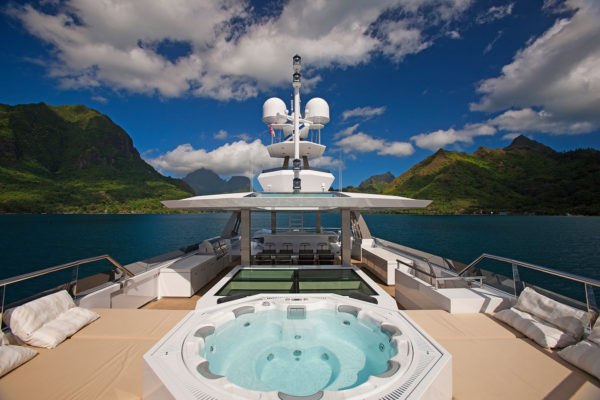
The jacuzzi sundeck of the Big Fish. Photo by Tim McKenna, courtesy of Y.Co.
While some clients are open to considering various remote destinations, Camper & Nicholsons’ Patterson notes, “Many come to us asking for a specific destination, usually because of a particular interest.” This has brought a change in the yacht crews’ skills: the 54.3-metre sailing yacht Tiara, currently in the Indian Ocean and Southeast Asia [from €180,000 ($255,000 Canadian) per week from Y.Co] has an on-board kite-surfing instructor; Lamima is a certified PADI diving centre with two instructors. Stewardesses who are certified yoga or Pilates instructors are par for the course these days, adds Y.Co’s Heming.
“There’s an important difference between a regular charter and an expedition,” says Ben Lyons of EYOS. “The latter requires local guides, ideally born into that culture, but at least able to speak the tribal languages and know the customs intimately, so that they can arrange access for our guests.” A charter in remote waters is often thought of as a once-in-a-lifetime experience. But, says Heming, “It becomes highly addictive.”
_________
Never miss a story. Sign up for NUVO’s weekly newsletter.

